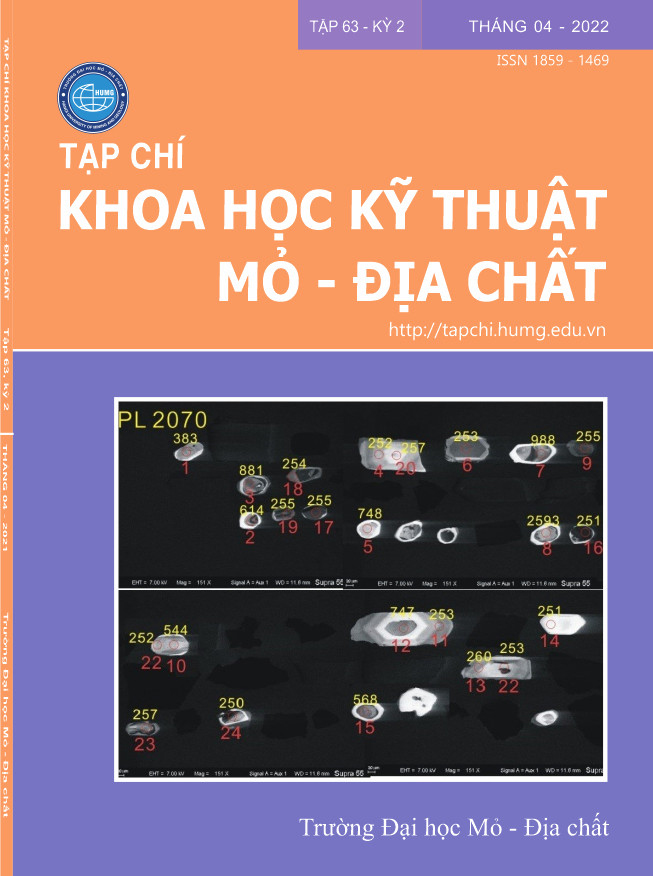U-Pb ages of zircon from an intrusion located at the northern part of Pac Lang deposit, Ngan Son district, Bac Kan province and its relation to mineralization of gold- quartz - sulfide
Abstract
The geological investigation indicated that the structure of Pac Lang gold mining has been constrained by a small intrusion about 1200 m in length and 150÷200 m in wide, which elongates east - west along the provincial highway of DT209. This block includes two intrusive phases, in which (1) the first phase consists of grabrodiabas and (2) the second phase is porphyry granitic rock. According to the geological map of Bang Khau - Yen Lac at a scale of 1:50.000, it has been considered Ban Sieu complex (µD3 bs1), containing gabbro grabrodiabas semplaced during the Late Devonian. A U-Pb LA-ICP-MS zircon age of 250÷270 Ma (mean = 253.5±2.3 Ma) was obtained for a sample of PL.2057 (porphyry granitic), and 250÷257 Ma (mean = 253.3±3.1 Ma) was obtained for a sample of PL.2070 (gabrodiabas). These results have pointed out that the timing emplacement of magma intrusion in this study is much younger than that in previous studies. It is close to the ages of intrusive rocks found in Song Hien interior rift and the ages of intrusive rocks found in the Song Hien interior rift, proposed by other geologists. Therefore, it can be classified into the late Permian - early Triassic (P3-T1) Cao Bang complex of ultramafic - mafic - felsic of Song Hien interior rift. Based on the hydrothermal transformation, especially hornfels metamorphic in the Khau Lieu area with distribution rules, the development of gold - quartz - sulfide ores in the Pac Lang mine may be the gold ores related to the hidden magma instrusion of the Cao Bang complex.

